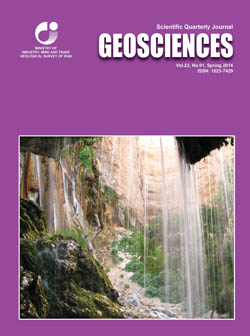Document Type : Original Research Paper
Authors
1 Assistant Professor, Department of Geology, Payame Noor University, Tehran, Iran
2 Associate Professor, Department of Geology, Faculty of Sciences, Shahid Bahonar University, Kerman, Iran
Abstract
The Abdasht complex is one of the major ultramafic complexes in south-east Iran (Esfandagheh area). This complex is composed mainly of dunite, harzburgite, lherzolite, chromitite, and subordinate wehrlite. The detailed electron microprobe study revealed very high Cr# (48-86), Mg# (26-56) and very low TiO2 content (averaging 0.07 wt %) for chromian spinels in peridotites. The Fe3+# is very low (<0.08 wt%) in the chromian spinel of peridotites which reflects crystallization under the low oxygen fugacities. The harzburgite, dunite and lherzolite samples are highly depleted in PGE contents relative to the chondrites. The PdN/IrN ratios in dunites are unfractionated, averaging 0.72, whereas the harzburgites and lherzolites show slightly positive slopes PGE spidergrams, together with a small positive Ru anomaly, and their PdN/IrN ratio averages 2.4 and 2.3, respectively. Moreover, the PGE chondrite and primitive mantle normalized patterns of harzburgite, dunite and lherzolite of this complex are relatively flat which are comparable to the highly depleted mantle peridotites and indicating a high degree of partial melting (about 20-25%) of the mantle source. The mineral chemistry data and PGE geochemistry of Abdasht peridotites indicate that the Abdasht ultramafic complex was generated from an arc-related magma with boninitic affinity above a supra-subduction zone setting.
Keywords

